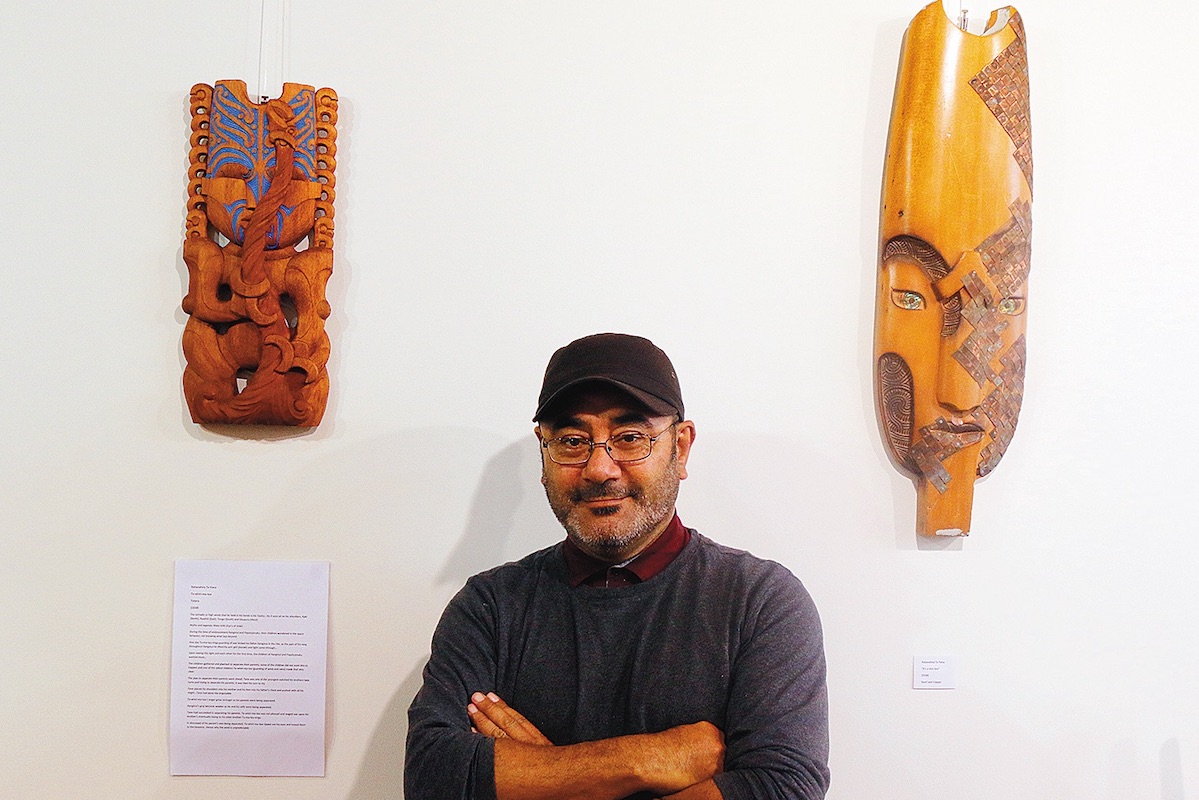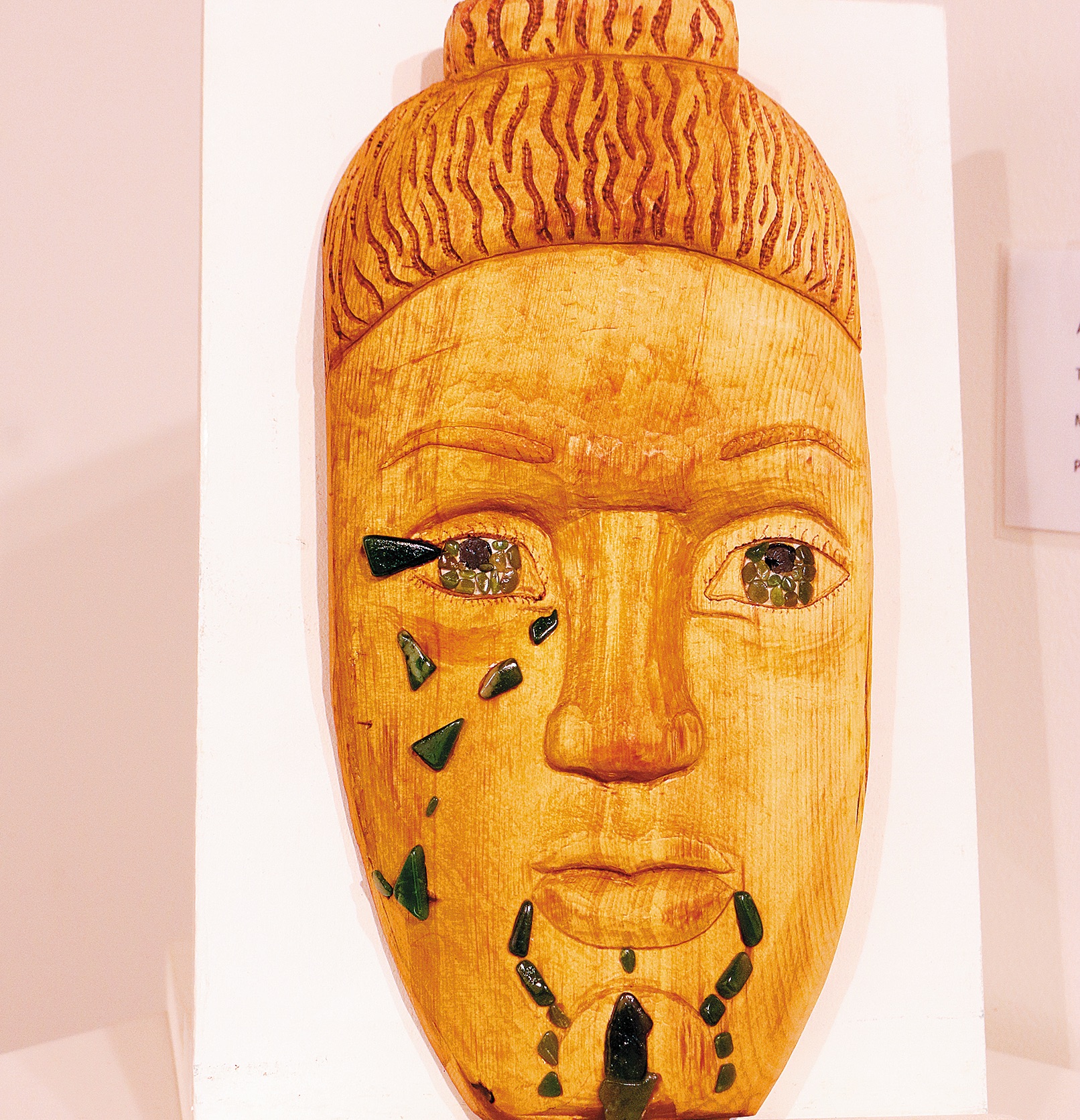What's New
7 July, 2021
Master carver helping make Matariki more meaningful

It’s tempting to call Natanahira Te Pona North Shore’s Matariki man.
After all, the master carver and tutor has been running workshops for local schools and is currently a key contributor to two exhibitions with works exploring the topic.
These – at the Lake House Arts Centre in Takapuna, where Te Pona is based, and at Deport Artspace, Devonport – include his own carvings and those of adult whakairo students he has mentored.
Te Pona is well versed in spreading enthusiasm and cultural understanding of the Maori New Year. ”There was an obvious gap. I saw it a long time ago, and wanted to build a community around it,” he told the Observer.
But his korero on Matariki quickly convinces that even the name deserves more context.
To some iwi, this time of celebration and contemplation is named for the star Puanga (Reigel) in Orion’s Belt, rather than Matariki (the Pleiades cluster, sometimes referred to as the Seven Sisters, and by the Japanese as Subaru,
meaning gathered together). The difference in name is because in certain northern and western areas of the country, Puanga is more visible than Matariki, rising from its early winter absence to herald a change of season.
As to the art, interpretations are equally layered. Te Pona’s own carving skills were developed in study at the
Maori Arts and Crafts Institute in Rotorua and honed over 30 years. Grounded in tradition, his pieces include contemporary mixtures of wood and bronze.
At the Lake House he has two works (pictured on opposite page) depicting Tawhaki and Hapai, he human, she celestial. They united on Earth, then parted, with Hapai returning heavenward and Tawhaki labouring to follow her. Eventually ascending, he too became divine, with lightning flashing across the skies from his armpits.
Some of his students are from other cultures, integrating new ideas into what they have found in Aotearoa.
Among them is Kristina Sokolova who settled here from the Balkans. She says: “Today Matariki is still seen as an important time to celebrate the Earth and show respect for the land on which we live.”
Sokolova’s striking inlaid carving (pictured) was inspired by the creation legend of how Matariki came to be in the sky.

It is entitled Mata Ariki, or the Eyes of Ariki, and draws on the story of the forced separation of the Earth Mother Papatuanuku and the Sky Father Ranginui by their children eager to emerge into the light. Tawhirimatea (guardian of wind and rains) was opposed to his brothers plan, and after battling them unsuccessfully he ripped out his eyes, crushed them and threw them to heaven where they became stars… hence why the wind is seen as unpredictable.
For Te Pona, it is pleasing to see how Puanga Matariki has grown from being little known a decade ago to widely recognised.
Next year it will be a national holiday. The Birkdale resident, who grew up in Turangi and has Nga Puhi ancestry, sees it as a chance to spread understanding. He also teaches te reo out of the Lake House.
Tomorrow, Saturday 10 July, Te Pona will lead an open-to-all lantern hikoi from the base of Takarunga in Devonport at 6pm.
Environmentally friendly lantern-making is another of the community classes he has been running. He hopes recent participants will bring their lanterns along, but this is not necessary to enjoy the walk and, weather permitting, some star-gazing too.
The hikoi will end at the Depot Artspace and mark the closing night of Te Hauhake – Harvesting, in which both Te Pona and Sokolova have works. In all, 10 artists are involved in the Depot show, half from Tamaki Makaurau and half from the Hokianga. This again adds to the differing perspectives on Matariki.
Anyone wishing to see the Lake House exhibition, He Kākano Ahau and Te ao Mārama, best be quick. It ends today, Friday, 9 July, with the carvings complemented by the paintings of guest artist Ramari Tauroa-Tibble. Carved finials in the show will be able to be appreciated for longer. After a blessing they will be installed on the main building.
The Rangitoto Observer can be downloaded online here.

Please consider supporting The Rangitoto Observer by clicking here:

